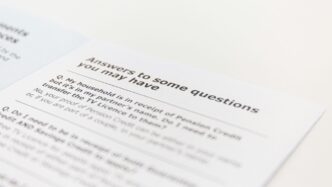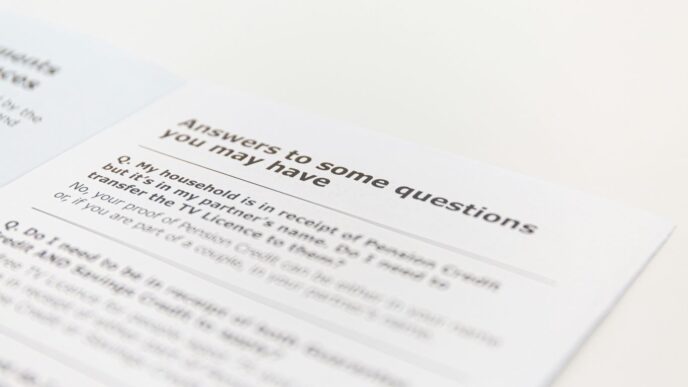Answering diversity interview questions can feel a bit daunting, especially when you know companies are looking for more than just the right words. These questions are about who you are, how you work with others, and whether you really understand what inclusion means in the workplace. In 2025, hiring managers want to see real-life examples, not just buzzwords. So, if you’re prepping for an interview, it helps to have a few stories ready, know what the company cares about, and show that you’re comfortable working with all kinds of people. Here’s what you should keep in mind to make your answers stand out.
Key Takeaways
- Understand why employers ask diversity interview questions—they want to see if you fit their goals for inclusion and teamwork.
- Prepare a few stories from your own experience that show how you’ve worked with different people or handled challenging situations.
- Research the company’s approach to diversity so you can connect your answers to what matters most to them.
- Show emotional intelligence by talking about how you handle conflict or work with people who have different backgrounds.
- Ask your own questions about the company’s diversity efforts to show you’re serious about inclusion, not just saying what you think they want to hear.
Understanding the Purpose of Diversity Interview Questions

Recognizing What Employers Seek
Diversity interview questions are not just buzzwords or something HR asks to tick a box. When interviewers ask about diversity and inclusion, they genuinely want to know if you understand and appreciate different perspectives.
- Employers look for teammates who can work well with people from all walks of life and contribute to a respectful workplace.
- They want to see if you value differences—whether those are in race, gender, experience, opinions, or backgrounds.
- Companies often prefer candidates who can help build a culture where everyone feels comfortable sharing ideas, even if they’re not the majority opinion in the room.
The Evolution of Diversity Hiring
Things have changed a lot in the last few years. Back in the day, diversity mostly meant making sure there was basic representation. Now, it’s about belonging, fairness, and using everyone’s strengths. Some hiring managers might remember a time when these topics didn’t come up at all. In 2025, though, there’s an expectation for companies to be proactive—people want to know there’s a real commitment behind the talk. Here’s a brief timeline:
| Year | Focus of Diversity |
|---|---|
| 2000s | Representation, compliance |
| 2010s | Inclusion initiatives, metrics |
| 2020s | Equity, belonging, accountability |
| 2025 | Measurable inclusion, impact |
Aligning Your Experience with Inclusion Goals
When you answer diversity questions, interviewers are really asking, “How will you help us reach our goals?” Connecting your story to these goals takes a bit of homework and honesty. Try these steps:
- Think of specific moments when you worked with a diverse team or learned something from someone different from you.
- Link those stories to what the company says about its diversity mission (check their website or annual reports for clues).
- If you’ve helped make someone feel included or spoke up for fairness, mention it—but be real, not rehearsed.
If you focus on the real impact you’ve made and show awareness of why inclusion matters, employers will see that you get why these questions count.
Preparing Thoughtful Stories for Diversity Answers
Coming up with great stories isn’t just about recalling big wins at work. It’s about thinking through pockets of your experience that actually show how you handle real situations—especially the tough or awkward ones around difference, inclusion, or teamwork. Here’s how I go about it:
Identifying Relevant Experiences
- Grab a notebook or note-taking app, scroll through your career, and jot down moments that involved teamwork, disagreement, or adapting to new perspectives.
- Don’t just chase the obvious. Think about that time you helped onboard a new team member from a totally different background, or when you stepped into a project where the group couldn’t agree on the best way forward.
- Aim for variety: get stories that show you working with different groups, facing difficult situations, and supporting someone different from yourself.
Incorporating the STAR Method Effectively
The STAR method really earns its keep during these interviews. Structure your story using Situation, Task, Action, and Result, but don’t get stuck reading a mental script. Instead:
- Set the stage (Situation): Quick and clear background.
- Describe what you were responsible for (Task).
- Focus most of your energy showing what you did (Action)—since this is usually what interviewers care about.
- End with a real result. Did the team finally agree? Did you learn something that changed the way you work?
| STAR Element | What to Include (Example) |
|---|---|
| Situation | “Our team was split on how to tackle a project for an overseas client.” |
| Task | “I had to get everyone on the same page—fast.” |
| Action | “I organized an open forum, listened to concerns, and helped the group brainstorm solutions.” |
| Result | “The client singled us out for creative teamwork in their review.” |
Demonstrating Growth Through Challenge
Let’s be real: not all your stories are neat and tidy victories. If things blew up or you made a mistake, own it. Show what you took away and how it changed you. This isn’t a confession booth—it’s a chance to prove you learn and adapt.
- Don’t gloss over the mess. Say what went wrong, what you figured out about yourself, and how you do things differently now.
- If you once struggled to see a team member’s perspective, tell how you realized that, and what you’ve changed since. Examples where you grew are often stronger than ones where everything just went smoothly.
- Emphasize how your mindset has shifted. “Now, I try to start tricky projects with open questions, not assumptions.”
By building a few of these stories in advance, you’ll feel more prepared and way less stressed when the interviewer throws those tricky diversity questions your way.
Tailoring Your Responses to Company Culture

No two workplaces are quite the same, and honestly, interviewers are just as interested in how you might fit into their world as they are in what you’ve done in the past.
Researching Employer Diversity Initiatives
If you’re prepping for an interview, just knowing the company’s name isn’t enough. You want to show you actually care about their specific approach to diversity. I always suggest:
- Checking out the company website’s diversity or values page.
- Looking up recent news or social media posts about their D&I (diversity & inclusion) achievements or setbacks.
- Reading employee reviews on sites like Glassdoor—it’s a goldmine for real talk about what’s happening behind closed doors.
If you’re going in, you’ll want at least one honest compliment about their work or maybe a constructive question about anything that’s missing. It shows you’ve done your homework and you’re invested.
Linking Your Values to Organizational Mission
Once you know what makes the company tick, you can pull stories from your own experience that hit those same notes. If they talk a lot about community support or hiring people from different backgrounds, think back to a specific time you:
- Helped make your old workplace more welcoming.
- Volunteered for a diversity task force (even if you just took minutes at meetings).
- Suggested a project that included underrepresented voices.
Instead of throwing out generic claims like “I love diversity,” you can say, “I noticed your team celebrates events like Juneteenth and International Women’s Day. At my last job, I started a mentoring program for undergrad interns from non-traditional backgrounds.”
Personalizing Your Diversity Narrative
None of this matters if your answers look copy-pasted. Personalizing doesn’t mean you have to bare your soul, but it should sound like you. For example, if you’ve moved around a lot, talk about how being new gave you a different outlook—maybe you were the first in your family to work in tech, or you joined a group where you were the only person with your background. Show how these experiences shaped both your approach to work and your interest in joining this specific company.
You might say, “What attracted me to this company is how you talk about learning from mistakes and welcoming feedback. My last team grew stronger when we listened to everyone at the table—including folks who rarely spoke up.”
Quick Table: Matching Your Experience to Company Culture
| Company Value | Your Relevant Experience |
|---|---|
| Inclusive Hiring | Participated in diverse interview panels |
| Community Engagement | Volunteered in local outreach initiatives |
| Feedback & Growth | Ran feedback sessions for project teams |
The main point is: you’ll make a stronger impression if you show that your history lines up with what they actually care about, not just what’s in the job posting.
Showcasing Emotional Intelligence and Team Synergy
You can be a technical genius, but in 2025, hiring managers are looking well past your resume lines. They want to know: can you relate to other people? Can you keep your cool when things get tense? Will you make the existing team stronger, or will you be a one-person army? Let’s break this down into the practical bits interviewers want to see.
Resolving Conflicts in Diverse Environments
Handling disagreement is the true test of emotional intelligence at work. No office is free from clashes. Instead of focusing on avoiding conflict, talk about how you deal with tough spots involving different cultures, experiences, or viewpoints. For example:
- Stay calm and listen, even when others get heated.
- Ask clarifying questions instead of making assumptions.
- Seek common ground and offer solutions that include everyone’s perspective.
A simple table can help you structure examples:
| Situation | Your Response | Outcome |
|---|---|---|
| Two teammates disagreed | Mediated a dialogue | Completed project |
| Project feedback clashed | Asked for more viewpoints | Improved final product |
| Remote/in-person team gap | Initiated hybrid meetings | Better communication |
Highlighting Collaboration Across Differences
You don’t have to lead every group. Sometimes, the quietest role—connecting people who think differently—matters most. When sharing your experience:
- Mention diverse teams you’ve worked on (remote, cross-functional, international).
- Point out moments you bridged a gap or helped others feel included.
- Share what you learned from a coworker with a totally different background.
These stories are more believable if you talk about hiccups, not just the happy ending.
Reflecting Self-Awareness in Team Settings
Self-awareness means you know your strengths, but also where you trip up. It’s honest, and it signals you’re easy to work with. Try to:
- Admit a time you misunderstood someone—and how you fixed it.
- Explain how you’ve adjusted your style to help the team.
- Share feedback you received and the changes you made.
The best answers aren’t perfect—they’re real. That’s what interviewers actually want: not someone flawless, but someone willing to listen, adapt, and grow right alongside everyone else.
Anticipating and Addressing Common Diversity Questions
Getting ready for a diversity interview sometimes feels like prepping for a pop quiz you can’t totally predict. But if you know how these questions usually pop up and what interviewers want to hear, you’ll stay in control and give honest answers. Here’s how you can stay sharp on the questions that tend to come up most:
Practicing Answers to Typical Scenarios
You’re probably going to run into a few old favorites, but they’re never worded exactly the same way. Think questions like: “Tell me about a time you worked with someone very different from you,” or “How do you ensure everyone’s voice is heard?”
Here’s how to tackle them:
- Write down 3–5 personal stories ahead of time. It’s even better if they cover work, volunteering, and group projects.
- Don’t memorize answers, but map out the main points and stick to them.
- Use brief details to help your answers stand out from the generic crowd.
A quick table with go-to questions and what they’re actually getting at:
| Common Question | What They Want to See |
|---|---|
| "Describe a challenge on a diverse team." | Problem-solving and empathy |
| "How have you helped someone feel included?" | Initiative and awareness |
| "What’s your approach to difference?" | Openness to new perspectives |
Think about highlighting your own unique actions, like presenting new ideas to leadership—being proactive says a lot about how you’ll support inclusion day-to-day.
Handling Questions About Implicit Bias
Sometimes, interviewers want to see if you can talk about uncomfortable stuff without getting defensive. When asked about bias, they expect you to admit everyone has it, and talk about how you deal with it, not claim you’re immune.
Consider these points:
- Share a learning moment—maybe a workshop or a mistake you realized and fixed.
- Focus on what you’ve changed in your behavior, not just what you believe.
- Show you’re not afraid to ask for feedback when you don’t know something.
Navigating Situational and Behavioral Prompts
Situational and behavioral interview questions can trip you up because they’re not looking for a list—they want to know about your actual decisions and actions. You might hear something like: “Imagine a team member feels excluded. What would you do?”
To answer these well:
- Listen all the way through before jumping in—it’s easy to miss details otherwise.
- Pick a real story, not a hypothetical if you can—interviewers can usually tell the difference.
- Stay calm and talk about progress, not perfection. It’s okay to say you learned something new.
Remember, honest stories about mistakes and growth are what stand out, not claims that you always do the right thing. The more you practice with friends, the less awkward it’ll feel when it actually counts.
Utilizing Non-Verbal Cues to Reinforce Inclusion
Your body language and overall presence in an interview might say more than your answers. Many interviewers are looking not just for what you say, but for how you present yourself—especially when it comes to topics like inclusion. Non-verbal cues can tell employers you’re approachable, open-minded, and genuinely interested in diverse perspectives.
Projecting Openness Through Body Language
People pick up on non-verbal signals fast. If you want to show that you’re inclusive, start with these basics:
- Sit up straight but stay relaxed. It’s amazing how much this simple move projects confidence and approachability.
- Face the person you’re speaking with and keep your arms uncrossed. This kind of posture looks open, not shut off.
- Nod occasionally while someone else is speaking. This signals agreement or understanding and can make you seem like someone who listens to others, even if their backgrounds or opinions are different than yours.
- Use small, controlled hand gestures to avoid seeming stiff. Keep your hands visible—they make you look more trustworthy.
- Maintain regular, comfortable eye contact (in-person or by looking at your camera if it’s virtual). It’s not just about respect—it tells people you care about their input, whatever their background.
A well-timed smile also goes far. You want to look at ease, not like you’re rehearsing lines. Neutral but warm expressions let you seem genuine and approachable.
Building Rapport Virtually and In Person
Virtual interviews add another layer. Without physical cues like a handshake, you have to work a bit harder to look engaged. Try these tips:
- Look directly at your camera—not just the screen—when answering. This feels like actual eye contact for the other person.
- Lean in slightly and nod to important points. You’re showing active listening, even through a screen.
- Mention or ask follow-up questions about what they just said. This is a great way to indicate you’re paying attention (and it works in person, too).
- Limit distractions. Silence your phone and close unnecessary tabs, so you aren’t glancing away mid-conversation. It’s a huge sign of respect for your interviewer and their workplace culture.
- Use intentional summaries: "If I heard you right, your team prioritizes [diversity-focused value]. That’s something I really connect with…"
If you want real proof that inclusive communication makes a quantifiable difference, using gender-neutral language in job postings actually ups response rates by 42%. That’s a reminder that subtle shifts in how we communicate, even in non-verbal ways, matter.
Managing Nerves and Conveying Authenticity
Nerves can creep in, especially when you’re trying to get across how much inclusion means to you. Don’t try to hide them completely—in some ways, they show you care.
Here are some ways to manage nerves and still seem authentic:
- Take a deep breath before big questions. It’s simple, and it keeps you from rushing through answers.
- Keep gestures slow and natural. Fast movements can seem jittery, while steady ones bring calm.
- If you miss a question, just say so. Own your slip with a quick, honest response, and move on.
- Remember, being genuine trumps being perfect. Most interviewers spot a rehearsed act—small, real reactions are more relatable.
Table: Quick Reference for Non-Verbal Inclusivity
| Cue | Virtual Setting | In-Person Setting |
|---|---|---|
| Eye contact | Look at webcam | Meet interviewer’s gaze |
| Posture | Upright, lean in to camera | Sit tall, slight forward lean |
| Gestures | Controlled, stay in frame | Open, visible, natural |
| Listening signals | Verbal affirmations, nodding | Nodding, small smiles |
| Distractions | Silent phone, clear background | Put away devices |
Non-verbal cues are your way of showing, not just saying, that you value inclusion. Whether it’s a head nod in-person or a smile through the webcam, these habits leave a lasting impression and say a lot about the type of colleague you’ll be.
Asking Strategic Questions to Demonstrate Commitment
Smart interviewees know that the last few minutes of an interview matter just as much as the first. When interviewers ask if you have any questions, it’s a real chance to stand out—not just a hurdle to clear. The way you pose your questions is proof you’ve done your homework, care about the job, and, most importantly, care about the company’s diversity efforts. Let’s look at how you can prepare meaningful, memorable questions that show your intent and preparation.
Researching Corporate Diversity Progress
If you only look at the company’s main page, you’re missing context. Go deeper. Skim recent press releases, quarterly statements, and even their blog. Sometimes, you’ll find info about new diversity targets or a recent partnership that’s not yet common knowledge. This research lets you frame questions like:
- “I noticed your last annual report mentioned a commitment to increase leadership diversity by 15% by next year. How is that going, and what are some current challenges?”
- “Your site mentions employee resource groups—what sort of impact have they had on workplace culture so far?”
- "Are there any statistics or progress reports available that track year-over-year growth on diversity initiatives?"
Here’s a simple way to compare what you find about targets and progress:
| Year | Leadership Diversity Target | Actual Progress (%) |
|---|---|---|
| 2022 | 10% | 8% |
| 2023 | 12% | 11% |
| 2024 | 15% | 13% |
Framing Questions to Highlight Your Fit
Not all questions are about getting answers—sometimes, it’s about showing how you fit. Frame your questions to tie your background or interests to the company’s goals:
- “In my previous job, I helped launch a mentorship program for first-gen college grads. Would something similar support your inclusion aims?”
- “I saw you sponsor social media engagement campaigns about workplace inclusion. How do employees contribute those ideas or get involved?”
- “What traits stand out in team members who grow into diversity advocates here?”
When you do this, you’re signaling that you’re not just aware of their strategy, but you might help them move it forward.
Understanding Future Inclusion Plans
You want to show you’re thinking long-term. Ask questions that look toward the future and reveal how you see yourself playing a part:
- "Can you share any upcoming initiatives or goals on the diversity front that the company is excited about?"
- "How do you see the company’s inclusion efforts changing as the company expands or enters new markets?"
- "What do you hope new hires will bring to these inclusion plans over the next year or two?"
Asking about future plans also cues the interviewer to picture you as a long-term team member. It’s a subtle but powerful way to move from candidate to potential colleague in their mind.
Your interview shouldn’t just be about selling yourself. It’s also about showing you care about where the company is going—especially when it comes to building a better, more inclusive workplace.
Wrapping It Up: Your Next Interview Awaits
So, that’s the rundown on tackling diversity interview questions in 2025. It might feel like a lot, but honestly, it all comes down to being prepared and being yourself. Take some time to think about your own experiences—what makes you unique, how you’ve worked with different people, and what you’ve learned along the way. Don’t just memorize answers; try to connect your stories to what the company is looking for. And remember, interviews are a two-way street. You’re not just there to impress them—they need to be a good fit for you, too. Keep it real, stay curious, and don’t be afraid to ask your own questions. With a bit of practice and some honest reflection, you’ll be ready to handle whatever comes your way. Good luck out there!
Frequently Asked Questions
What are diversity interview questions and why do employers ask them?
Diversity interview questions are questions employers use to see how you work with people from different backgrounds. They want to know if you can help create a welcoming and fair workplace for everyone.
How can I prepare good stories to answer diversity questions?
Think about times when you worked with people who were different from you. Use the STAR method: describe the Situation, Task, Action, and Result. Practice telling these stories so you feel ready.
How do I show that I fit the company’s culture in my answers?
Research the company’s values and diversity programs. Mention what you learned and explain how your own beliefs and experiences match what the company cares about.
What should I do if I get nervous during a diversity interview question?
Take a deep breath and pause before answering. Remember to speak slowly and clearly. It’s okay to take a moment to think. Being honest and showing your true self is more important than being perfect.
How can I show emotional intelligence when answering diversity questions?
Talk about times you listened to others, solved disagreements kindly, or worked well in a team. Show that you understand and respect different points of view.
What questions can I ask the interviewer to show I care about diversity?
You can ask about the company’s current diversity projects, how they support inclusion, or what their future plans are for making the workplace even more welcoming for everyone.














